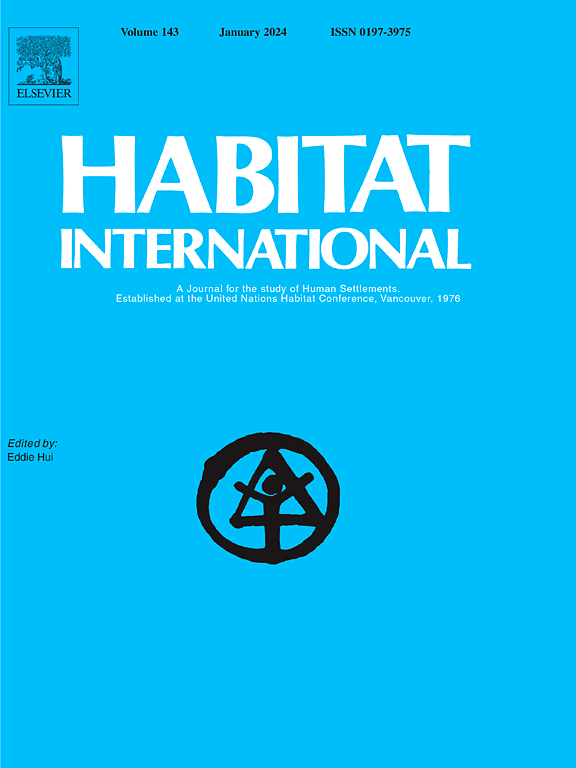建筑环境与多维贫困:探索可达性作为空间机会的中介
IF 7
1区 经济学
Q1 DEVELOPMENT STUDIES
引用次数: 0
摘要
虽然研究确定了建筑环境与城市贫困之间的联系,但对空间机会影响多维贫困的机制仍然知之甚少。本研究探讨了可达性如何中介空间机会与多维贫困之间的关系,同时考虑了其他建筑环境特征。利用家庭层面的数据,我们应用结构方程模型分析了空间机会通过可达性影响贫困的复杂途径,同时考虑了密度、设计、到公共交通的距离和多样性的影响。研究表明,可达性起着至关重要的中介作用,使空间机会转化为多维贫困的切实减少。具体而言,虽然空间机会本身可能无法保证减贫,但可达性的改善可大大增强这些机会的潜在积极影响。此外,该研究还发现,到公共交通的距离是与多维贫困呈正相关的因素,而多样性则表现出负相关。研究结果表明,仅仅改变空间机会可能不足以减少贫困;可达性在城市干预中起着至关重要的中介作用,必须加以考虑。研究结果表明,旨在减少贫困的城市干预措施应优先考虑提高现有和新的空间机会的可达性。本研究通过强调可达性在塑造空间机会与贫困之间关系中的条件重要性,以及强调在设计城市干预措施时仔细考虑当地环境的必要性,加深了我们对建筑环境干预措施如何解决城市贫困问题的理解。本文章由计算机程序翻译,如有差异,请以英文原文为准。
The built environment and multidimensional poverty: exploring accessibility as a mediator of spatial opportunity
While research has established links between the built environment and urban poverty, the mechanisms through which spatial opportunities influence multidimensional poverty remain poorly understood. This study examines how accessibility mediates the relationship between spatial opportunity and multidimensional poverty, while accounting for other built environment characteristics. Using household-level data, we applied structural equation modelling to analyse the complex pathways through which spatial opportunity affects poverty via accessibility, alongside considering the influence of density, design, distance to public transport, and diversity. The research reveals that accessibility plays a crucial mediating role, enabling spatial opportunities to translate into tangible reductions in multidimensional poverty. Specifically, while spatial opportunity alone may not guarantee poverty reduction, improvements in accessibility significantly enhance the potential positive impact of these opportunities. Furthermore, the study identifies distance to public transport as a factor positively associated with multidimensional poverty, and diversity exhibiting a negative association. The findings suggest that simply changing spatial opportunities may be insufficient for poverty reduction; accessibility plays a crucial mediating role that must be considered in urban interventions. The findings suggest that urban interventions aimed at poverty reduction should prioritise enhancing accessibility to existing and new spatial opportunities. This study advances our understanding of how built environment interventions can address urban poverty by highlighting the conditional importance of accessibility in shaping the relationship between spatial opportunities and poverty, and by underscoring the need for careful consideration of local context when designing urban interventions.
求助全文
通过发布文献求助,成功后即可免费获取论文全文。
去求助
来源期刊

Habitat International
Multiple-
CiteScore
10.50
自引率
10.30%
发文量
151
审稿时长
38 days
期刊介绍:
Habitat International is dedicated to the study of urban and rural human settlements: their planning, design, production and management. Its main focus is on urbanisation in its broadest sense in the developing world. However, increasingly the interrelationships and linkages between cities and towns in the developing and developed worlds are becoming apparent and solutions to the problems that result are urgently required. The economic, social, technological and political systems of the world are intertwined and changes in one region almost always affect other regions.
 求助内容:
求助内容: 应助结果提醒方式:
应助结果提醒方式:


